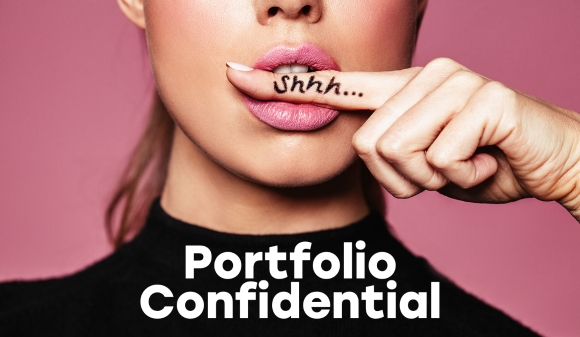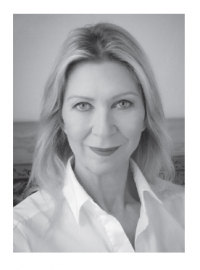Portfolio Confidential

 Real world confidential portfolio discussions:
Real world confidential portfolio discussions:
I’ll be turning 60 later this year and getting more serious about planning for me and my wife. Where does one get retirement software for personal use? It seems only certified financial planners have these kinds of things. Perhaps I am not looking in the right place.
You are correct in that some of the more complex financial planning software is targeted and may only be available to financial planners and advisors. This is partly due to the subscription costs and partly due to the expertise needed to ensure the software is used as intended. Here are some suggested resources courtesy of Steven Arnott at Ripple Financial Planning:
This link outlines all of the financial planning software available in Canada as of spring 2021: https://jasonpereira.ca/canadian-fintech-landscape.
Some of the banks have financial planning tools within their online portals that can help calculate and track towards goals. There are also a few simplified financial planning/retirement calculator tools available for end users for free, including:
- https://www.wealthsimple.com/en-ca/tool/retirement-calculator/
- https://my.planswell.com/en-CA/discovery/
- https://www.sunlife.ca/en/tools-and-resources/tools-and-calculators/retirement-savings-calculator/
You can go through the sites to find end-user options, for instance, there’s a subscription option for Gobeil & Associates Retirement software for personal use for $99.00 https://www.gobeil.ca/purchase/106230-Personal-Use
I am a 65-year-old divorced woman, retired and living off the dividend income of my investments. I’m 100% invested in a broad range of equities. Is my portfolio too risky?
There is no ‘one size fits all’ when it comes to age and appropriate asset mix. Decades ago, the guideline for equity allocation used to be “100 minus your age”, which would imply a 35% equity exposure in your case, which (in today’s market) seems absurd. The investment industry needs to do a much better job at helping investors get a grip on both ‘risk tolerance’ and ‘portfolio risk’. They are very different things.
Risk tolerance comes into play when designing a portfolio strategy: it is a relative concept combining the personality of the risk-taker, the investing environment (e.g. are interest rates at all-time lows?), the time horizon, and investment objectives. Importantly, what feels risky to one investor might be a walk in the park for another: risk is in the eye of the beholder.
The first question to ask yourself when designing a portfolio strategy is “What is the money for?” The answer drives radically different risk and return profiles. If for example, aside from generating income to fund your lifestyle, the money is eventually going to be passed along to your kids, you will want to maximize growth and equities are the most effective way to accomplish this. If the money is for financing all the trips on your bucket list in the next few years, you will probably need to be more conservative.
Assuming that a portfolio has been designed based on an investor’s objectives, constraints and unique preferences, the resulting asset mix decision will correspond with their personal risk tolerance. Once you feel comfortable that your asset mix makes sense for your situation the next step is to look at the associated level of portfolio risk. Even if the bottom-line performance returns look great, it is important to be clear as to what you are actually invested in. Look at the percentage weightings in your overall consolidated portfolio by security, by industry and by country. At a glance you will be able to determine whether there is too much invested in any one asset, sector, or region.
Unfortunately, I see a lot of portfolios that have been constructed in a haphazard manner so they need to go back to square one to determine whether the level of portfolio risk is appropriate and aligned with personal risk tolerance: it often isn’t!
Although “too risky” is a complex question, it is entirely possible that 100% equity portfolio is the right choice for someone your age.
I am a 36-year-old single woman working for a bank as a commercial account manager. I hate every minute of being in the bank… it feels like I’m toiling away! But one big positive that has come from this experience is I’ve discovered that I love the interactions I have with entrepreneurs: I love hearing about what they are working on and their struggles. I’d really like to become an entrepreneur myself, but I don’t think that is my personality type. What other kind of career can I pursue that would be more interesting than a boring bank job?
Interestingly, this question comes up a lot, but only on my Zoom calls with women. I don’t really know why but perhaps it relates to the fact that a significantly higher percentage of women have either lost their jobs, or they’ve lost a huge part of their employment income during the pandemic. Women of all ages are looking for new and creative ways to support themselves (and their families) and we are seeing a surge in the number of female entrepreneurs post-COVID. According to some early indicators I’ve identified, women are starting three quarters of new businesses! I call this “the COVID catapult!”
What if you don’t feel like climbing the corporate ladder and you just aren’t the entrepreneurial type? My best advice in this environment is to develop a portfolio career: this means having several part-time jobs at once, rather than one full-time job. The trick is to position yourself in a sweet spot (or five). Where is the demand today? How can you address those business needs? Diversifying your employment portfolio and having multiple revenue streams (perhaps a main job plus a side hustle, or multiple smaller gigs) is an excellent way to both manage risk and stay interested!
My own post pandemic non-retirement scenario looks much the same as it did before the world changed so dramatically. I multitask for income by working on a combination of research projects, writing, paid speaking, and consulting. During the pandemic it has really helped to have a diversified portfolio of uncorrelated types of work. While external researchers have been chopped out of many corporate budgets, virtual events picked up significantly with higher demand for global content due to the savings from having no travel costs.
Although we are currently living in strange times, it’s important to remember that some of the greatest leaps forward have followed very dark and painful periods in history. Coming out of this pandemic, many women feel more motivated than ever to take that leap and create a career that finally feels right for them!
Barbara Stewart, CFA. Do you have questions about your own investment portfolio? I have recently set up The Rich Thinking® Financial Advice Hotline. This will be a win/win: you get a free 30-minute confidential Zoom chat offering an independent, unbiased perspective on your financial situation with no sales pitch! In exchange, I get to use the anonymized data that will come from these conversations to make my Rich Thinking research even better. Email me to book your Zoom discussion: barbara@barbarastewart.ca


